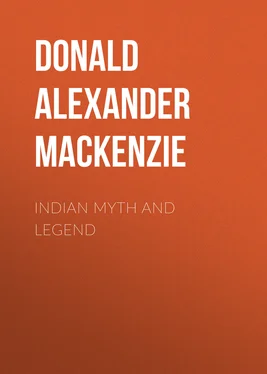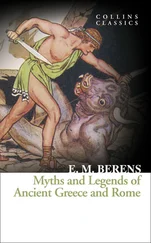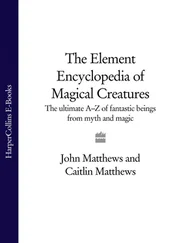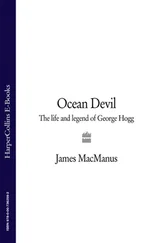Donald Alexander Mackenzie - Indian Myth and Legend
Здесь есть возможность читать онлайн «Donald Alexander Mackenzie - Indian Myth and Legend» — ознакомительный отрывок электронной книги совершенно бесплатно, а после прочтения отрывка купить полную версию. В некоторых случаях можно слушать аудио, скачать через торрент в формате fb2 и присутствует краткое содержание. Жанр: foreign_prose, foreign_religion, Философия, Мифы. Легенды. Эпос, foreign_psychology, foreign_antique, на английском языке. Описание произведения, (предисловие) а так же отзывы посетителей доступны на портале библиотеки ЛибКат.
- Название:Indian Myth and Legend
- Автор:
- Жанр:
- Год:неизвестен
- ISBN:нет данных
- Рейтинг книги:4 / 5. Голосов: 1
-
Избранное:Добавить в избранное
- Отзывы:
-
Ваша оценка:
- 80
- 1
- 2
- 3
- 4
- 5
Indian Myth and Legend: краткое содержание, описание и аннотация
Предлагаем к чтению аннотацию, описание, краткое содержание или предисловие (зависит от того, что написал сам автор книги «Indian Myth and Legend»). Если вы не нашли необходимую информацию о книге — напишите в комментариях, мы постараемся отыскать её.
Indian Myth and Legend — читать онлайн ознакомительный отрывок
Ниже представлен текст книги, разбитый по страницам. Система сохранения места последней прочитанной страницы, позволяет с удобством читать онлайн бесплатно книгу «Indian Myth and Legend», без необходимости каждый раз заново искать на чём Вы остановились. Поставьте закладку, и сможете в любой момент перейти на страницу, на которой закончили чтение.
Интервал:
Закладка:
A slighter and long-headed brunet type is found south of Hindu Kush. Ripley has condensed a mass of evidence to show that it is akin to the Mediterranean race. 11 11 The Races of Europe , W. Z. Ripley, 450 et seq .
He refers to it as the “eastern branch”, which includes Afghans and Hindus. “We are all familiar with the type,” he says, “especially as it is emphasized by inbreeding and selection among the Brahmans.... There can be no doubt of their (the Eastern Mediterraneans) racial affinities with our Berbers, Greeks, Italians, and Spaniards. They are all members of the same race, at once the widest in its geographical extension, the most populous and the most primitive of our three European types.” 12 12 The Races of Europe , W. Z. Ripley, p. 451.
Professor Elliot Smith supports Professor Ripley in this connection, and includes the Arabs with the southern Persians in the same group, but finding the terms “Hamitic” and “Mediterranean” insufficient, prefers to call this widespread family the “Brown race”, to distinguish its representatives from the fair Northerners, the “yellow” Mongolians, and the “black” negroes.
North of the Alpine racial area are found the nomadic Mongolians, who are also “broad heads”, but with distinguishing facial characteristics which vary in localities. As we have seen, the Mongoloid features are traceable in India. Many settlers have migrated from Tibet, but among the high-caste Indians the Mongoloid eyes and high cheek bones occur in families, suggesting early crossment.
Another distinctive race has yet to be accounted for—the tall, fair, blue-eyed, long-headed Northerners, represented by the Scandinavians of the present day. Sergi and other ethnologists have classed this type as a variety of the Mediterranean race, which had its area of localization on the edge of the snow belt on lofty plateaus and in proximity to the Arctic circle. The theory that the distinctive blondness and great stature of the Northerners were acquired in isolation and perpetuated by artificial selection is, however, more suggestive than conclusive, unless we accept the theory that acquired characteristics can be inherited. How dark eyes became grey or blue, and dark hair red or sandy, is a problem yet to be solved.
The ancestors of this fair race are believed to have been originally distributed along the northern Eur-Asian plateaus; Keane's blonde long-headed Chudes 13 13 Man, Past and Present , A. H. Keane, p. 270.
and the Wu-suns in Chinese Turkestan are classed as varieties of the ancient Northern stock. An interesting problem is presented in this connection by the fair types among the ancient Egyptians, the modern-day Berbers, and the blondes of the Atlas mountains in Morocco. Sergi is inclined to place the “cradle” of the Northerners on the edge of the Sahara.
The broad-headed Turki and Ugrians are usually referred to as a blend of the Alpine stock and the proto-Northerners, with, in places, Mongolian admixture.
As most of the early peoples were nomadic, or periodically nomadic, there must have been in localities a good deal of interracial and intertribal fusion, with the result that intermediate varieties were produced. It follows that the intellectual life of the mingling peoples would be strongly influenced by admixture as well as by contact with great civilizations.
It now remains for us to deal with the Aryan problem in India. Dr. Haddon considers that the invading Aryans were “perhaps associated with Turki tribes” when they settled in the Punjab. 14 14 The Wanderings of Peoples , A. C. Haddon, p. 21.
Prior to this racial movement, the Kassites, whose origin is obscure, assisted by bands of Aryans, overthrew the Hammurabi dynasty in Babylon and established the Kassite dynasty between 2000 B.C. and 1700 B.C. At this period the domesticated horse was introduced, and its Babylonian name, “the ass of the East”, is an indication whence it came. Another Aryan invasion farther west is marked by the establishment of the Mitanni kingdom between the area controlled by the Assyrians and the Hittites. Its kings had names which are clearly Aryan. These included Saushatar, Artatatama, Sutarna, and Tushratta. The latter was the correspondent in the Tel-el-Amarna letters of his kinsmen the Egyptian Pharaohs, Amenhotep the Magnificent, and the famous Akhenaton. The two royal houses had intermarried after the wars of Thothmes III. It is impossible to fix the date of the rise of the Mitanni power, which held sway for a period over Assyria, but we know that it existed in 1500 B.C. The horse was introduced into Egypt before 1580 B.C.
It is generally believed that the Aryans were the tamers of the horse which revolutionized warfare in ancient days, and caused great empires to be overthrown and new empires to be formed. When the Aryans entered India they had chariots and swift steeds.
There is no general agreement as to the date of settlement in the Punjab. Some authorities favour 2000 B.C., others 1700 B.C.; Professor Macdonell still adheres to 1200 B.C. 15 15 Vedic Index of Names and Subjects (1912), p. viii.
It is possible that the infusion was at first a gradual one, and that it was propelled by successive folk-waves. The period from the earliest migrations until about 800 or 700 B.C. is usually referred to as the Vedic Age, during which the Vedas, or more particularly the invocatory hymns to the deities, were composed and compiled. At the close of this Age the area of Aryan control had extended eastward as far as the upper reaches of the Jumna and Ganges rivers. A number of tribal states or communities are referred to in the hymns.
It is of importance to note that the social and religious organization of the Vedic Aryans was based upon the principle of “father right”, as contrasted with the principle of “mother right”, recognized by representative communities of the Brown race.
Like the Alpine and Mongoloid peoples, the Vedic Aryans were a patriarchal people, mainly pastoral but with some knowledge of agriculture. They worshipped gods chiefly: their goddesses were vague and shadowy: their earth goddess Prithivi was not a Great Mother in the Egyptian and early European sense; her husband was the sky-god Dyaus.
In Egypt the sky was symbolized as the goddess Nut, and the earth as the god Seb, but the Libyans had an earth-goddess Neith. The “Queen of Heaven” was a Babylonian and Assyrian deity. If the Brown race predominated in the Aryan blend during the Vedic Age, we should have found the Great Mother more in prominence.
The principal Aryan deities were Indra, god of thunder, and Agni, god of fire, to whom the greater number of hymns were addressed. From the earliest times, however, Aryan religion was of complex character. We can trace at least two sources of cultural influence from the earlier Iranian period. 16 16 A convenient term to refer to the unknown area occupied by the Vedic Aryans before they invaded India.
The hymns bear evidence of the declining splendour of the sublime deities Varuna and Mitra (Mithra). It is possible that the conflicts to which references are made in some of the hymns were not unconnected with racial or tribal religious rivalries.
Indra, as we show ( Chapter I), bears resemblances to other “hammer gods”. He is the Indian Thor, the angry giant-killer, the god of war and conquests. That his name even did not originate in India is made evident by an inscription at Boghaz Köi, in Asia Minor, referring to a peace treaty between the kings of the Hittites and Mitanni. Professor Hugo Winckler has deciphered from this important survival of antiquity “In-da-ra” as a Mitanni deity who was associated with Varuna, Mitra, and Nasatya.
No evidence has yet been forthcoming to indicate any connection between the Aryans in Mitanni and the early settlers in India. It would appear, however, that the two migrations represented by the widely separated areas of Aryan control, radiated from a centre where the gods Indra, Varuna, and Mitra were grouped in the official religion. The folk-wave which pressed towards the Punjab gave recognition to Agni, possibly as a result of contact, or, more probably, fusion with a tribe of specialized fire-worshippers.
Читать дальшеИнтервал:
Закладка:
Похожие книги на «Indian Myth and Legend»
Представляем Вашему вниманию похожие книги на «Indian Myth and Legend» списком для выбора. Мы отобрали схожую по названию и смыслу литературу в надежде предоставить читателям больше вариантов отыскать новые, интересные, ещё непрочитанные произведения.
Обсуждение, отзывы о книге «Indian Myth and Legend» и просто собственные мнения читателей. Оставьте ваши комментарии, напишите, что Вы думаете о произведении, его смысле или главных героях. Укажите что конкретно понравилось, а что нет, и почему Вы так считаете.












